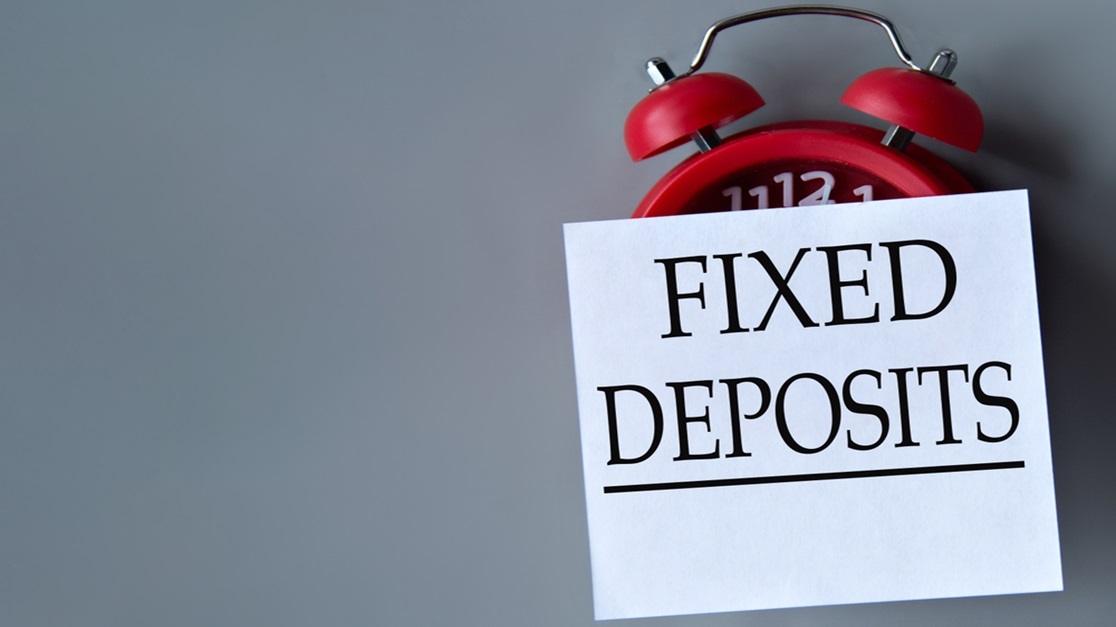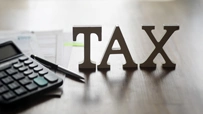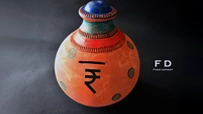How to Navigate the FD Market During Economic Uncertainty
Disclaimer: This blog is generic in nature and is meant for illustration purposes only.
September 09, 2025

Finding reliable investment options can be challenging during economic uncertainty. Fixed Deposits (FDs) are often considered a safe haven for investors looking to preserve capital and earn a steady return. However, navigating the FD market during such uncertain times requires a strategic approach.
In this article, we will explore how you can effectively manage your FD investments amidst economic volatility.
Benefits of Fixed Deposits
Fixed Deposits offer several benefits that make them an attractive investment option, especially during periods of economic uncertainty:
- Capital Protection: FDs are not market-linked. This ensures the stability of your investments even if the market experiences downturns.
- Predictable Returns: FDs offer a fixed interest rate, providing predictable returns over the investment period.
- Low Risk: FDs are not susceptible to market fluctuations compared to equities and other market-linked products.
Strategies for Navigating FD Market
1. Diversify Your Investments
Instead of placing all your funds into a single FD, consider spreading your investments across different FD tenures and schemes. This strategy helps mitigate risks associated with any single investment and optimise returns.
Let's say you have ₹1 lakh to invest in an FD. Instead of depositing the entire amount in one bank, consider dividing it into multiple smaller deposits across different banks. This way, even if one bank faces difficulties, your entire investment won't be at risk.
2. Consider Laddering Your FDs
FD laddering involves breaking your investment into several FDs with varying maturity dates. This approach ensures you can access liquidity at different intervals while benefiting from the higher interest rates of longer-term deposits. Laddering can also help you take advantage of potentially higher interest rates.
Suppose you have ₹5 lakhs to invest in FDs. Instead of investing the entire amount in a single 5-year FD, consider dividing it into five separate FDs with different tenures - 1 year, 2 years, 3 years, 4 years, and 5 years. This way, you'll have access to a portion of your funds at different intervals and can take advantage of any changes in interest rates.
3. Stay Informed About Interest Rate Trends
Interest rates tend to fluctuate based on economic conditions. During uncertain times, the Reserve Bank of India may adjust rates to stabilise the economy. Keeping an eye on these trends can help you make better decisions regarding the duration and timing of your FD investments. For instance, if rates are expected to rise, you might opt for shorter-term FDs to reinvest at higher rates later.
4. Evaluate FD Interest Rates Regularly
Interest rates offered on FDs can vary across different banks. Periodically reviewing the rates and considering moving your funds to banks offering better returns can maximise your earnings. However, ensure that any early withdrawal penalties and other conditions do not outweigh the benefits.
If you currently have an FD with an interest rate of 6% p.a. and come across another bank offering 7.45% p.a., it might be worth considering moving your funds to the higher-rate bank. However, the terms and conditions must be evaluated before making any decisions.
5. Assess Your Risk Tolerance
When investing, it's essential to assess your risk tolerance. Economic uncertainty often heightens concerns about financial stability. If you prefer lower risk, FDs can be a substantial part of your portfolio, but they should be complemented with other safe investment options to achieve a balanced approach.
Let's say you have ₹10 lakhs to invest. If you have a low-risk tolerance, you might allocate 70% of your funds to FDs and 30% to other safe options like PPF and other Government schemes. This way, you can enjoy the stability of FDs while diversifying your investments.
Final Thoughts
Navigating FD market during economic uncertainty requires careful planning and strategic decision-making. By diversifying your investments, considering FD laddering, staying informed about interest rate trends, regularly evaluating FD interest rates, and assessing your risk tolerance, you can make informed decisions to maximise your FD returns.
Looking to grow your savings? Ujjivan SFB offers a wide range of fixed deposit products. Select the FD of your choice and take a step forward to your financial goals. Alternatively, you can browse through Ujjivan SFB product suite - our wide range of financial products are designed to make your financial life better.
Disclaimer:
The contents herein are only for informational purposes and generic in nature. The content does not amount to an offer, invitation or solicitation of any kind to buy or sell, and are not intended to create any legal rights or obligations. This information is subject to updation, completion, amendment and verification without notice. The contents herein are also subject to other product-specific terms and conditions, as well as any applicable third-party terms and conditions, for which Ujjivan Small Finance Bank assumes no responsibility or liability.
Nothing contained herein is intended to constitute financial, investment, legal, tax, or any other professional advice or opinion. Please obtain professional advice before making investment or any other decisions. Any investment decisions that may be made by the you shall be at your own sole discretion, independent analysis and evaluation of the risks involved. The use of any information set out in this document is entirely at the user’s own risk. Ujjivan Small Finance Bank Limited makes no representation or warranty, express or implied, as to the accuracy and completeness for any information herein. The Bank disclaims any and all liability for any loss or damage (direct, indirect, consequential, or otherwise) incurred by you due to use of or due to investment, product application decisions made by you on the basis of the contents herein. While the information is prepared in good faith from sources deemed reliable (including public sources), the Bank disclaims any liability with respect to accuracy of information or any error or omission or any loss or damage incurred by anyone in reliance on the contents herein, in any manner whatsoever.
To know more about Ujjivan Small Finance Bank Products Visit:"https://www.ujjivansfb.in"
All intellectual property rights, including copyrights, trademarks, and other proprietary rights, pertaining to the content and materials displayed herein, belong
to Ujjivan Small Finance Bank Limited or its licensors. Unauthorised use or misuse of any intellectual property, or other content displayed herein is strictly prohibited and the same is not intended for distribution to, or use by, any person in any jurisdiction where such distribution or use would (by reason of that person’s nationality, residence or otherwise) be contrary to law or registration or would subject Ujjivan Small Finance Bank Limited or its affiliates to any licensing or registration requirements.
FAQs
1. Can I withdraw my FD before the maturity period?
Yes, you can withdraw your FD before the maturity period, but it may attract penalties or lower interest rates.
2. Are senior citizens eligible for higher FD interest rates?
Yes, Ujjivan SFB offers higher FD interest rates for senior citizens as a special benefit.
3. What happens if the bank offering my FD goes bankrupt?
In case of bank failure, deposits up to ₹5 lakhs per depositor per bank is insured by Deposit Insurance and Credit Guarantee Corporation (DICGC).
4. Is it necessary to have a savings account to open an FD?
No, opening an FD as a standalone investment does not require having a savings account with the bank.
5. Can I add funds to my existing FD?
You cannot add funds once you have opened an FD. However, you can open a new FD with additional funds.
6. Can I open an FD jointly with another person?
Yes, you can open an FD jointly with another person. It can be a convenient way to share ownership and avail joint benefits.
7. Can I take a loan against my FD?
Yes, you can take out a loan or overdraft against your FD. The loan amount is usually a percentage of the FD value and attracts lower interest rates than other loans.
8. Are there tax implications on FD returns?
Yes, the interest earned on FDs is taxable per your income tax slab. TDS (Tax Deducted at Source) may be applicable if the interest exceeds ₹50,000 (₹1 lakh for senior citizens) in a financial year.
Latest Blogs

Dussehra 2025: How to Win Your Financial Battles with Smart Saving
Dussehra 2025 (also known as Vijayadashami) falls on Thursday, October 2, 2025.

eSIM Scam in India: I4C Warns Mobile Users About Rising Fraud – How to Stay Safe
The Indian Cybercrime Coordination Centre (I4C), a wing of the Ministry of Home Affairs, issued a strong warning to mobile users about the rapid increase in eSIM fraud in India.

How to Link PAN with Aadhaar: Step-by-Step Guide & Consequences of Not Linking
Linking your Permanent Account Number (PAN) with your Aadhaar is no longer just a best practice.

Annual Information Statement (AIS): A Complete Guide for Stress-Free ITR Filing
India’s tax season is in its final stretch.

ITR-1 (Sahaj) Restrictions: Income Sources Not Allowed & Filing Rules
With just a few days left before the 15 September 2025 deadline for filing Income Tax Returns (ITRs) for Assessment Year (AY) 2025-26, many taxpayers are rushing to submit their forms online.





